
Maya 2025 ships with MtoA 5.4.0, which introduces Arnold 7.3.0.0 core.
This release includes a GPU renderer overhaul using NVIDIA OptiX 8, resulting in numerous performance improvements. Additionally, global light sampling is now supported in volumes, improvements have been made to distance shader in reflections as well as thick curves intersector, and the toon shader now outputs AOVs for direct lighting that have a label in their aov parameter. Finally, a new Overlay imager has been added, allowing you to decorate or tag renders by printing text over the rendered images.
See the Arnold for Maya release notes for the full list of recently added features and bug fixes.
Support for MaterialX shader networks in LookDevX
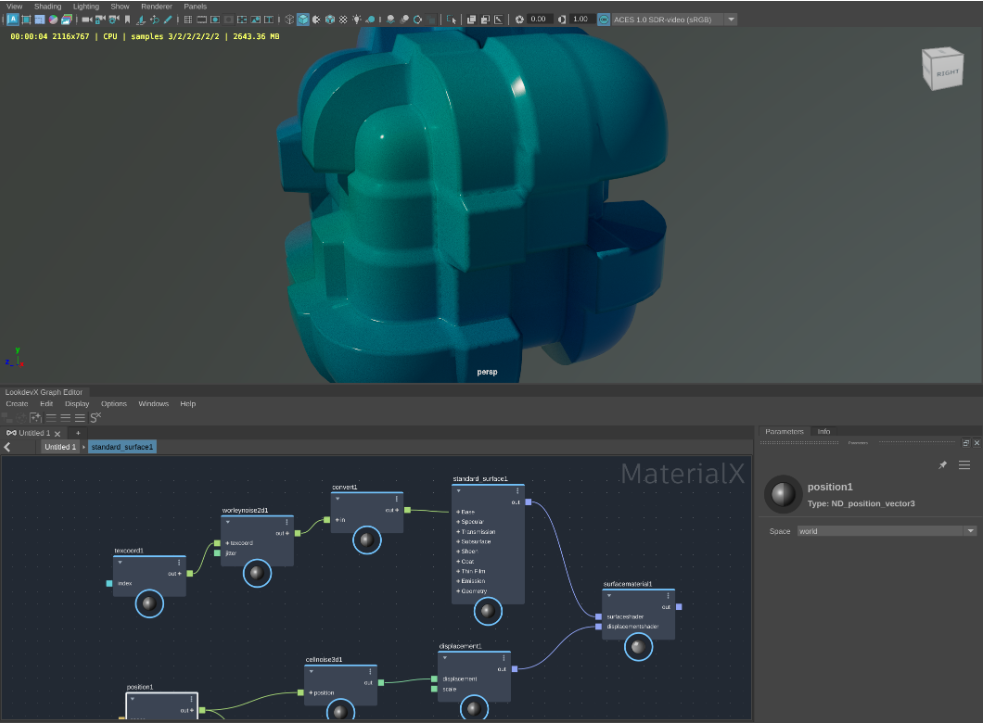
MtoA 5.4.0 adds support for the new LookDevX MaterialX node graph editor. This allows you to assign LookdevX shader networks to Maya geometry and mix MaterialX shader nodes with Arnold shaders.
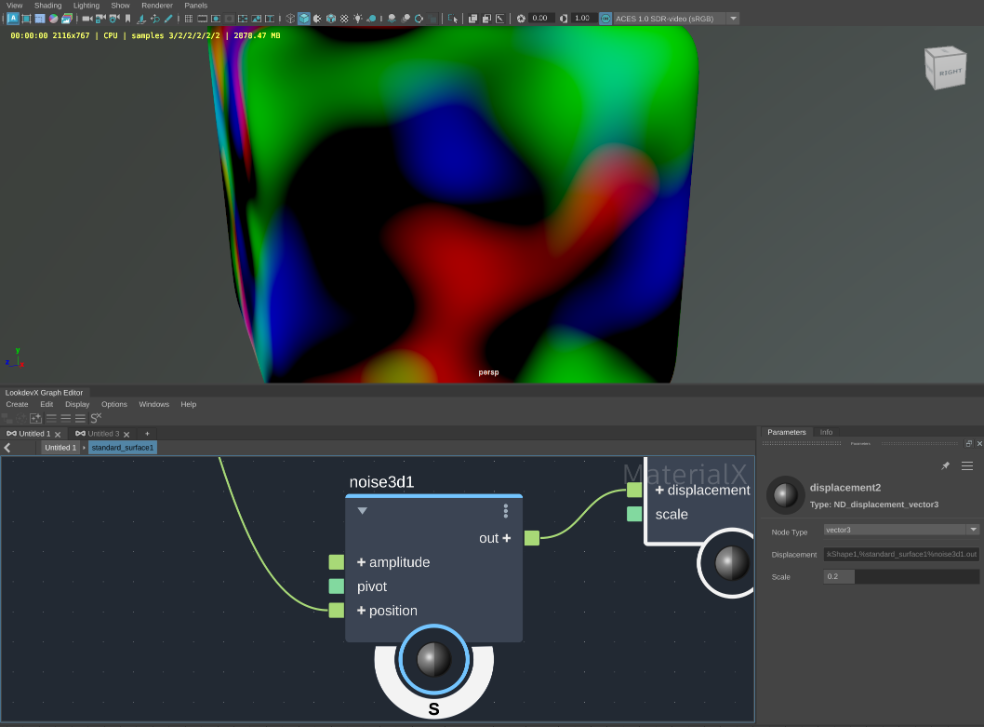
Progressive dithered sampling
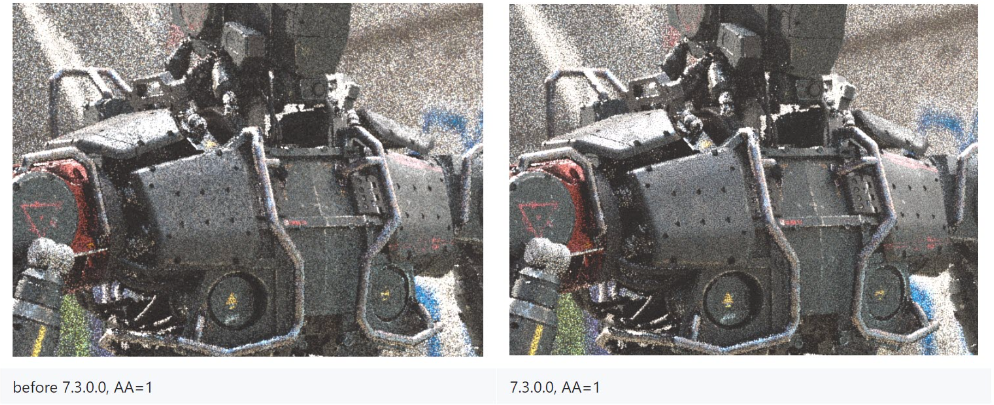
Arnold now supports dithered samples in progressive and adaptive rendering. Dithering brings nicer noise distributions at low AA sample counts.
GPU Renderer Overhaul
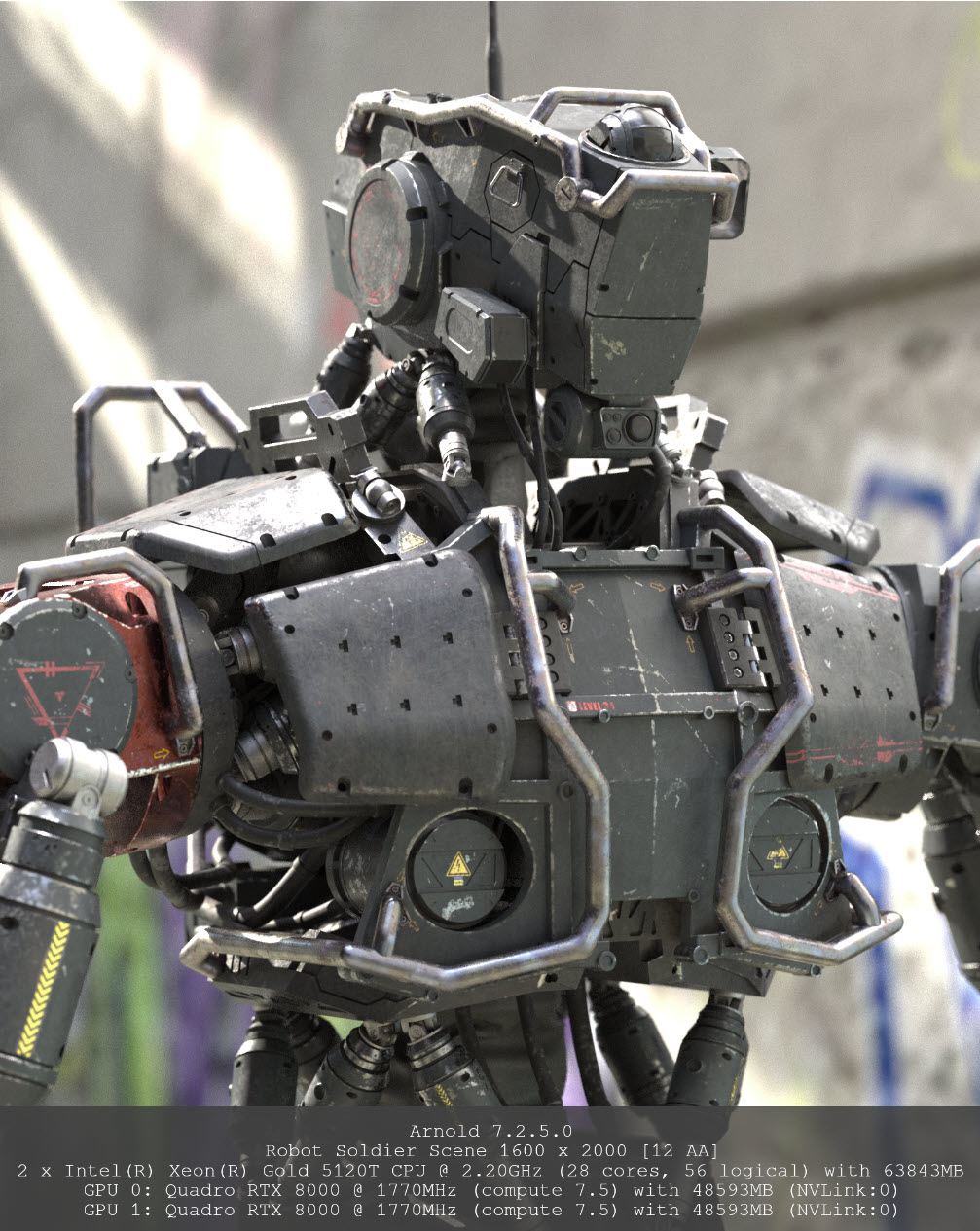
- Better GPU startup time: The cold cache pre-population time is up to 14x faster than before. This means that the time to first pixel of the first few renders after an Arnold upgrade will now be significantly faster. This overhead is now low enough that we no longer do a cache pre-population step.
- Better multi-GPU scaling: Render time scaling with multiple GPUs has been improved in scenes with many AOVs. When adding a second GPU, the robot soldier scene with 9 AOVs goes from having just a 1.1x speedup in the previous version of Arnold to a 1.7x speedup in Arnold 7.2.5.
- Newly supported features on GPU:
- multiple render sessions.
- autobump on per-face displacement shaders, previously, autobump would use the first shader applied.
- motion blur on the sphere primitive.
- shader parameter on skydome lights.
- polygons edge type in the wireframe shader.
- OSL LPE writing via debug closures.
- image shader file wrap mode.
- ID mode in utility shader.
- edgelength mode in utility shader.
- the GPU texture filtering logic has been improved such that there is a closer match to the CPU renderer.
- a number of fixes have been made to the GPU color management logic such that there is a closer match to the CPU renderer when rendering multiple sessions with different color management setting.
- Improved performance: The following production scenes show improved startup time better scaling on multiple GPUs, lower memory usage and faster rendering. The speedups and memory gains are scene dependant and are more visible on scenes with large number of textures.
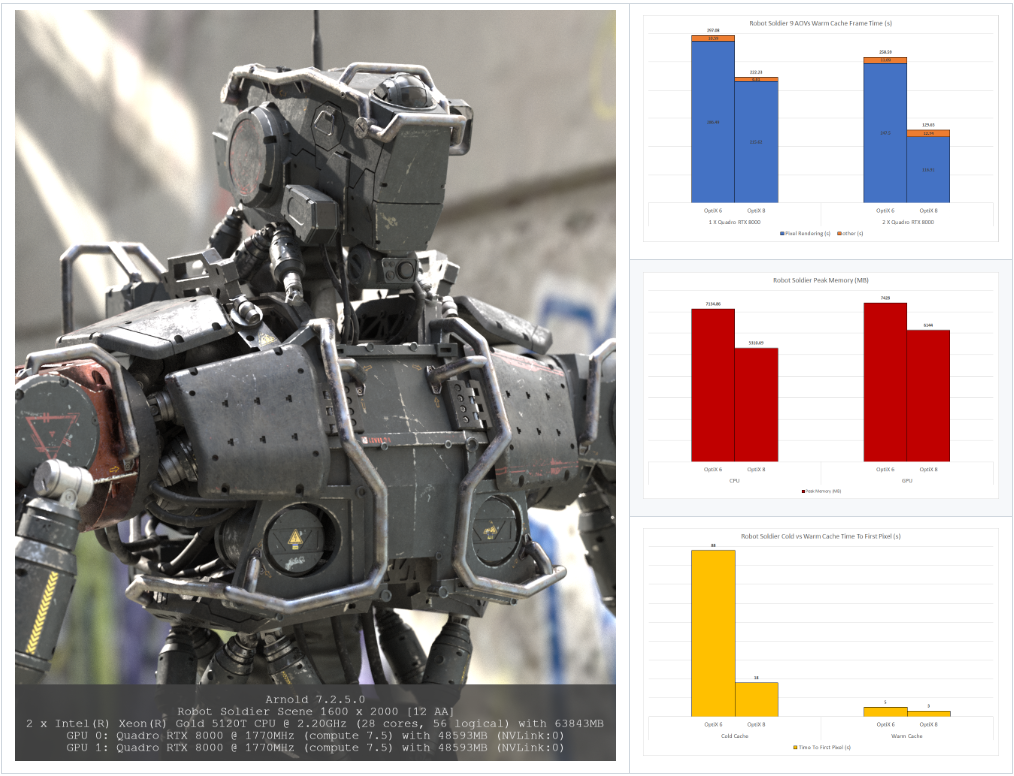
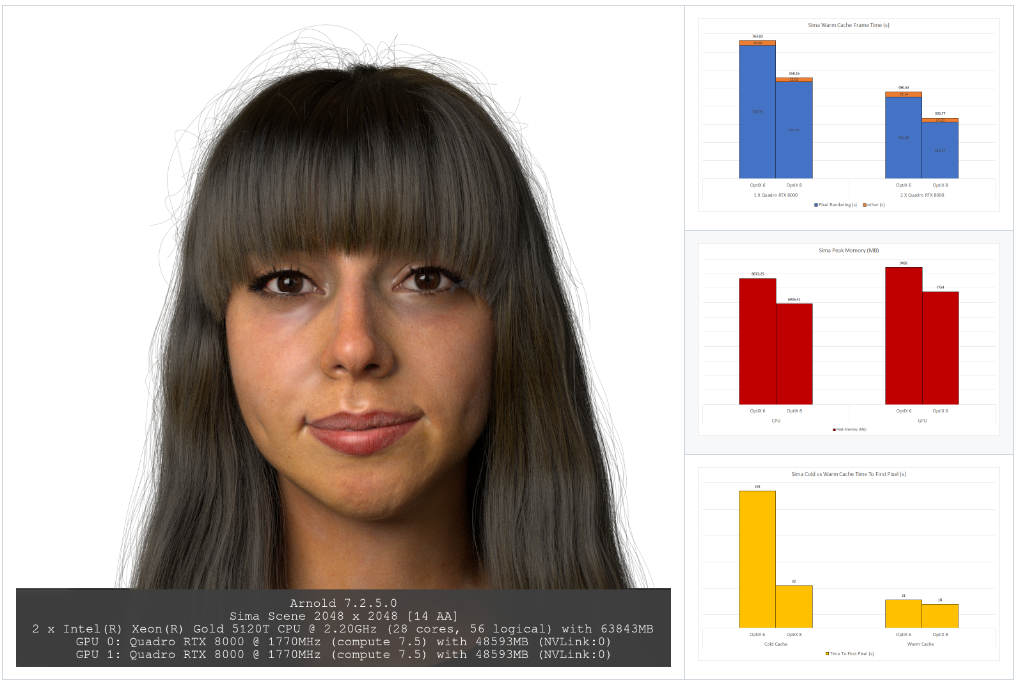
Global light sampling in volumes
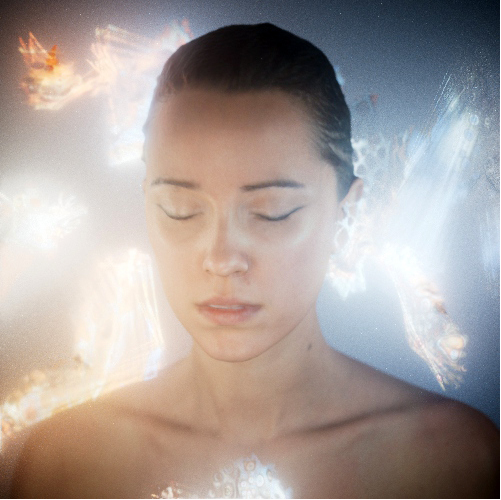
Global light sampling is now supported in volumes. The render time speedup when using global light sampling in volumes depends on the number of lights, but even scenes with only a few lights are faster to render.
Distance shader in reflections
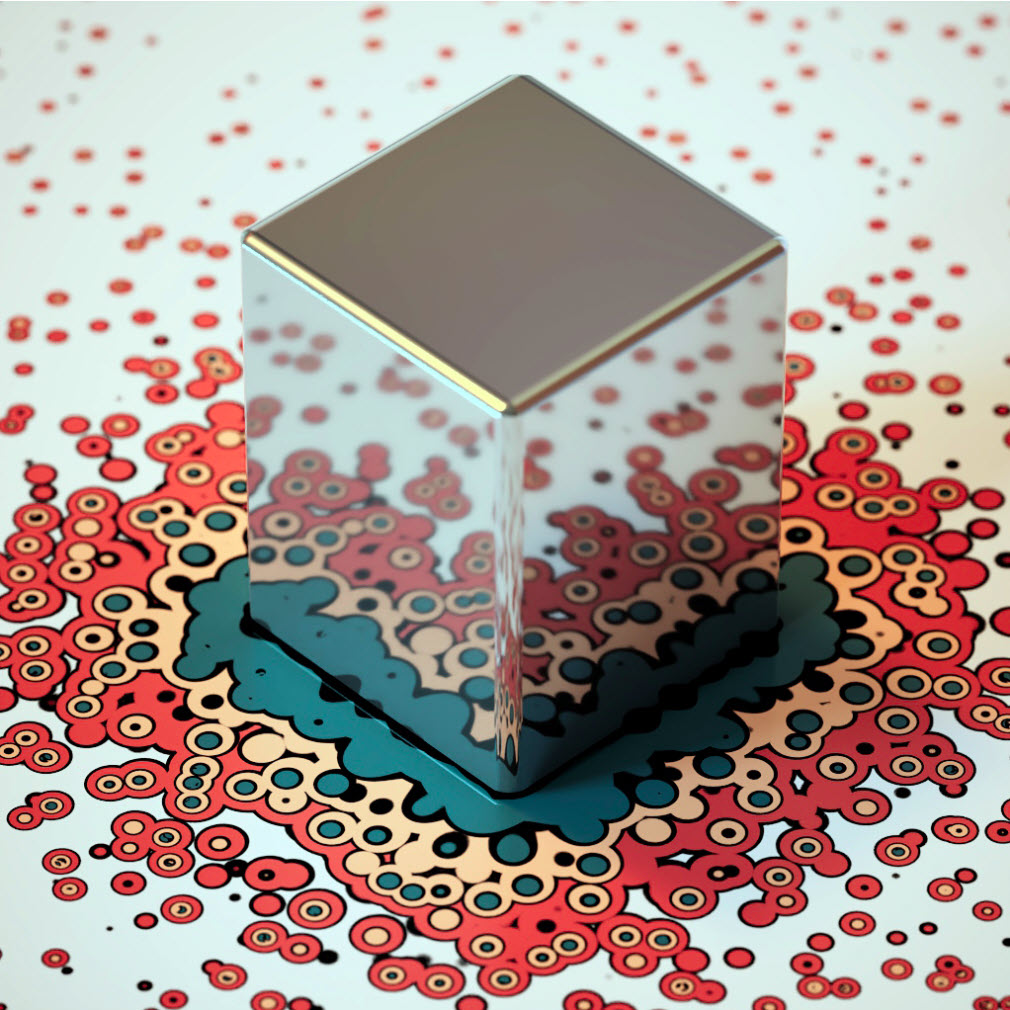
The distance shader now properly handles secondary paths such as reflections.
Overlay imager
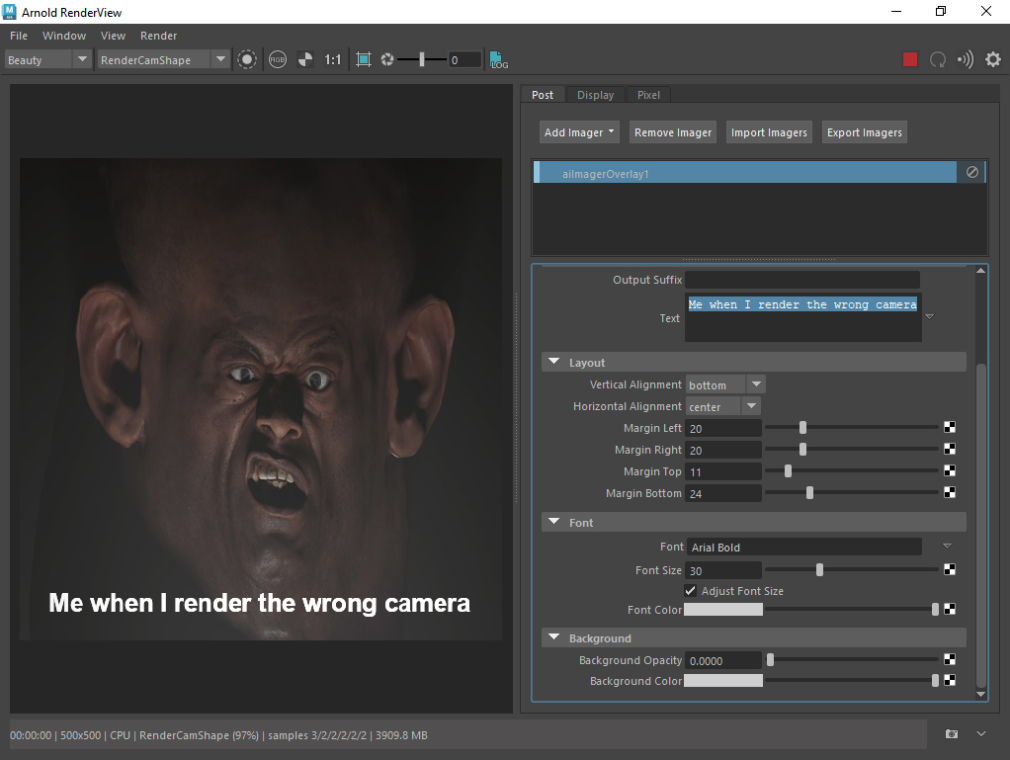
A new imager that allows you to decorate or tag your renders by printing text over the rendered images.
Better editor for the overlay imager
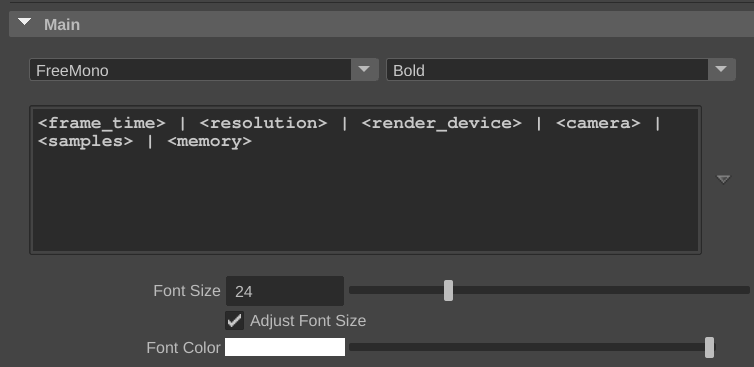
The editor for the overlay imager is now more intuitive and previews the chosen font and style.
Improved thick curves intersector
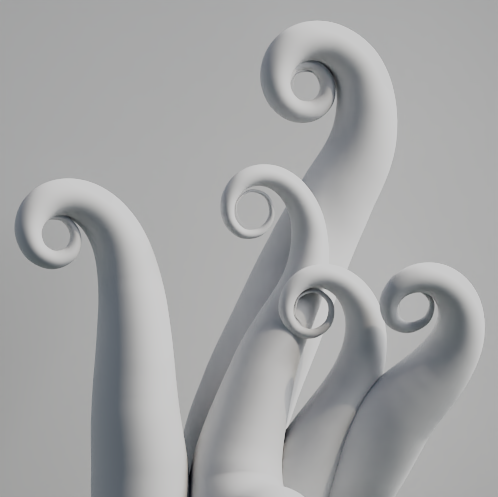
Curves in thick mode are on average 10% faster (in some cases, more than 100% faster) and they look better in closeups.
Toon light-group AOVs
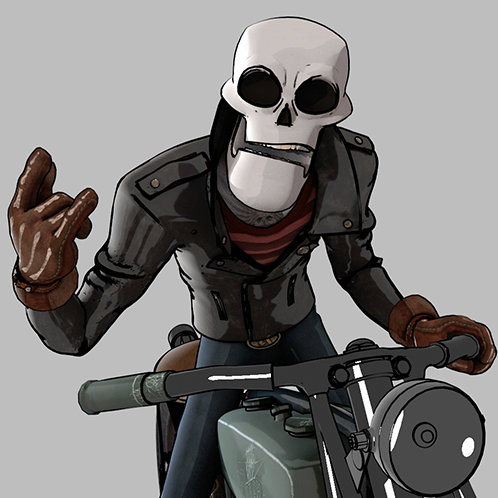
The toon shader now outputs AOVs for direct lighting from lights that have a label in their aov parameter.
More Enhancements
- Improved MaterialX support: Arnold can now render MaterialX node graphs mixing standard library. DCCs loading the Arnold node definitions will benefit from the newly added UI metadata and provide a better user experience. Arnold also now uses MaterialX 1.38.8, this update brings new nodes in the MaterialX standard library, for a full list of changes please see the full release notes.
- Emission and per-light-group AOVs: Per-light-group indirect AOVs no longer include emission. Emissive surfaces now only appear in the "default" light group output. When using emission in shaders, the sum of the light group AOVs will now add up to the beauty pass.
- Evaluate autobump in SSS on GPU: Autobump will now be evaluated in the SSS computation with the GPU renderer when the sss_use_autobump option is enabled, this matches the behavior when rendering on CPU.
- GPU Denoising with the Intel Denoiser: The Intel denoiser now includes real-time denoising through NVIDIA and Intel GPU support. You can between Auto/CPU/GPU modes for the OIDN denoiser imager. Arnold now also provides accurate timing information for the denoiser in the log.
- Batch renders now abort on license fail: Arnold now aborts if there is a license error in a batch render. The option abort_on_license_fail is now true by default, and applies to batch renders only. This means you don't have to check rendered image sequences for watermarks. Interactive renders do not abort, and have a watermark on license fail as usual. The environment variable ARNOLD_FORCE_ABORT_ON_LICENSE_FAIL overrides this default behavior (0 = batch and interactive render with watermarks on license fail, 1 = batch and interactive abort on license fail).
- Add license checkout time to render statistics: The render statistics now include the "license checkout time", which is the time in microseconds spent on license checkout for a specific render. This is useful to users to diagnose long checkout times when rendering in batch.
- Automatically create non-existent paths to tx file: Generating a .tx file (maketx, autotx, AiMakeTx) now works even if the paths to the output .tx file do not exist: Arnold now creates those paths.
- Faster overlapping volumes: Arnold renders a few percent faster when there are many overlapping volumes.
- Scene unit conversion for light intensity: Scene unit conversion is now supported for light intensity in nested procedurals. If a procedural contains a light and its scene units do not match the procedural units, the light intensity is scaled to match the procedural. Conversion is in place for Arnold ass file procedurals, but we do not yet support USD and arbitrary procedural formats.
- Scene unit conversion for volume density and emission: Scene unit conversion is now supported for volume density and emission in nested procedurals. If a procedural contains a volume and its scene units do not match the procedural units, volume density and emission are scaled to match the procedural. Conversion is in place for Arnold ass file procedurals, but we do not yet support USD and arbitrary procedural formats.
- Improved profiling: Procedural and volume intersection times are now listed separately, instead of being included with the parent BVH. Profiling has also been added in other areas, in particular multithreaded code where helper threads were not being accounted for. This should result in higher quality statistics.
USD Enhancements
- Update to USD 23.11: The USD version was updated USD from 22.11 to 23.11 in the procedural.
- Light instances: You can now instance lights with a Point Instancer.
- Visibility and Mattes on instances in Hydra: In the Hydra Render Delegate, the Arnold visibility and matte attributes now work on instances.
- UDSZ files supported as file format: You can render usdz files with kick, and load them with the usd procedural.
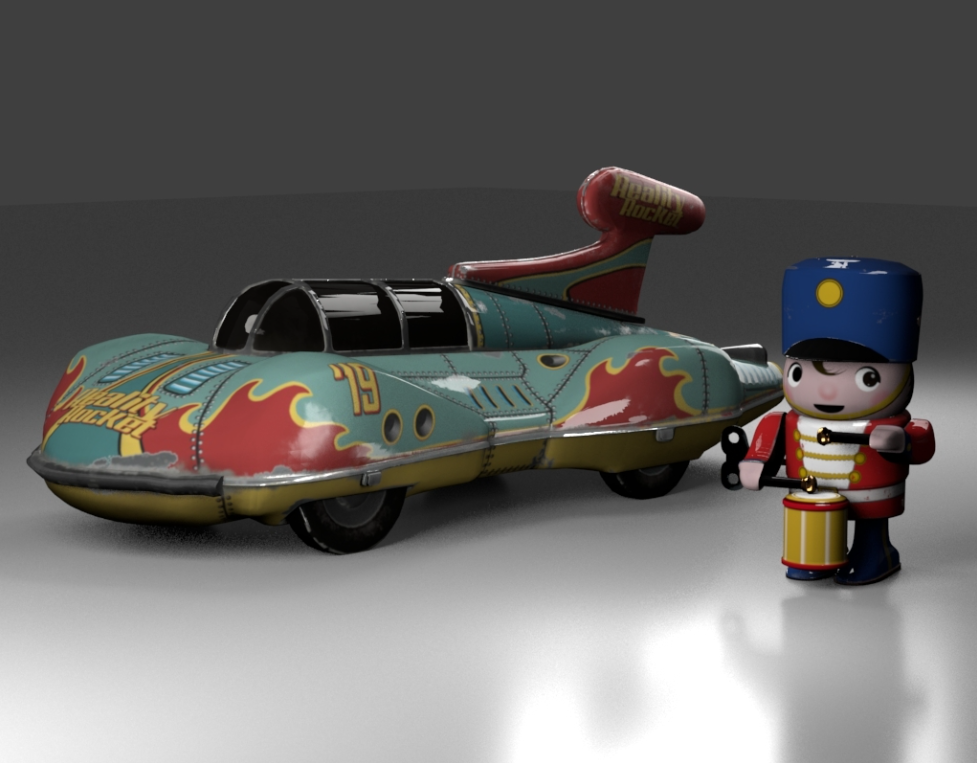
- Orthographic cameras in Hydra: Orthographic Cameras are now supported in the Hydra render delegate.
- Pixel Aspect Ratio in Hydra: The Arnold Render Delegate now supports the pixelAspectRatio parameter in RenderSetting primitives
